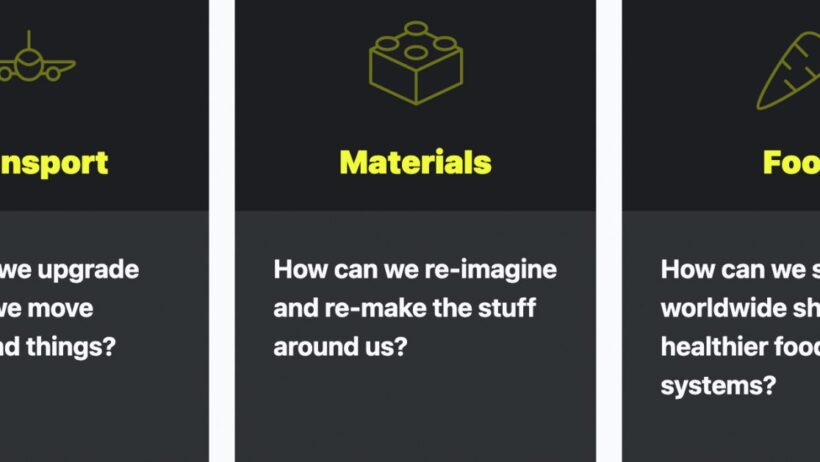The Climate Clock, an ingenious vessel of urgency, serves as a stark reminder of the dwindling time we have to combat climate change. Its evolution is not merely the product of technological innovation, but a culmination of fervent advocacy led by passionate individuals and organizations determined to catalyze societal transformation. Understanding who crafted this symbolic clock reveals not only the ingenuity involved but also the driving forces that underpin the climate action movement.
The conception of the Climate Clock is credited primarily to a collective of artists, scientists, and activists, notably the artist Gan Golan and the technologist Andrew Boyd. Together, they amalgamated their expertise to visualize the pressing nature of the climate crisis through this innovative timepiece. This clock not only counts down the time we have to limit global warming to 1.5 degrees Celsius, as recommended by the Intergovernmental Panel on Climate Change (IPCC), but also galvanizes individuals, communities, and governments around the world. Their collaboration illustrates the impact of interdisciplinary partnerships in addressing complex global challenges.
The decision to create such a dramatic representation stemmed from an urgent need to distill complex climate science into a digestible format. In a world inundated with information, the clock acts as a visceral reminder of the stakes. The goal was to provoke cognitive dissonance, igniting curiosity and encouraging ordinary individuals to reflect on their place within the overarching narrative of climate action. The visual component of the Climate Clock serves to breach the barrier of apathy, instigating a sense of immediacy that compels people to contemplate their responsibilities toward the planet.
The inception of this project was not merely an artistic endeavor; it was also a strategic response to a pervasive sense of urgency surrounding climate activism. In an age where data can be abstract and easily ignored, the visual language of the Climate Clock translates this complexity into an easily graspable form. It encapsulates the fears of climate scientists and advocates alike, amplifying their message through a clear, unambiguous countdown. This idea resonates especially in an era marked by distractions, where pressing issues often fade from public consciousness.
Moreover, the Climate Clock has transcended its initial physical installation, situated in New York City’s Union Square, to emerge as a global phenomenon. Its digital iterations, found on various websites and social media platforms, serve to multiply its impact, engaging a broader audience while compelling a conversation about climate action. The minds that nurtured the Climate Clock understood that engaging with modern technology and social media were vital to expanding its reach. As a result, it has morphed into a beacon of hope, galvanizing cities worldwide to adopt similar initiatives to raise awareness about climate urgency.
In addition to the artistic and technological contributions, the Climate Clock epitomizes the collective efforts of a multitude of activists and organizations working tirelessly in the climate sphere. These voice multipliers include environmental groups such as Greenpeace and the Sunrise Movement, as well as local grassroots efforts. Each of these entities carries the torch of climate advocacy, ensuring that the clock’s message reverberates far beyond the urban locale of its origin. The interconnectedness of these movements illustrates a deeply rooted commitment to climate accountability and ecological justice.
The narrative surrounding the Climate Clock is one of relentless determination and innovative strategy. It embraces whimsically dark humor—the idea of a countdown suggests that time is running out and that the moment to act is now. This longstanding notion of urgency in the environmental discourse resonates with the core principles of effective activism: harnessing emotion, fostering community, and inspiring action. These principles are deftly woven into the DNA of the Climate Clock project, elevating mere statistics to a compelling call to arms.
Another noteworthy aspect of the Climate Clock is its potential to reshape narratives about climate change from a focus on despair to one of empowerment. It serves not only as a harbinger of irreversible consequences but also as a platform for promoting climate solutions. Promoting renewable energy, advocating for legislative changes, and mobilizing communities towards sustainable practices are just some of the actions inspired by the clock’s ticking second hand. The architects of this initiative sought to ensure that amidst the dread of climate forecasts, optimism persists; positive change is possible if we collectively act within the finite time we have.
As the countdown continues to tick away, the Climate Clock stands as a testament to human creativity and resilience. It embodies a broader movement where art and activism merge to captivate and enlighten. A striking visualization not only of our present crisis but also of potential futures lies ahead—if only we have the courage to confront our reality and valiant enough to embrace transformation.
In conclusion, the Climate Clock is an emblem of ingenuity, intellect, and relentless passion. The minds behind its creation have produced a powerful tool that transcends conventional boundaries, rallying people from diverse backgrounds in a shared cause. By centralizing the narrative around time and urgency, these visionaries compel us to acknowledge that the time to act is not just approaching—it is now. As the clock continues to tick, it reminds us all of the responsibility we bear to forge a sustainable, equitable future for generations to come.








